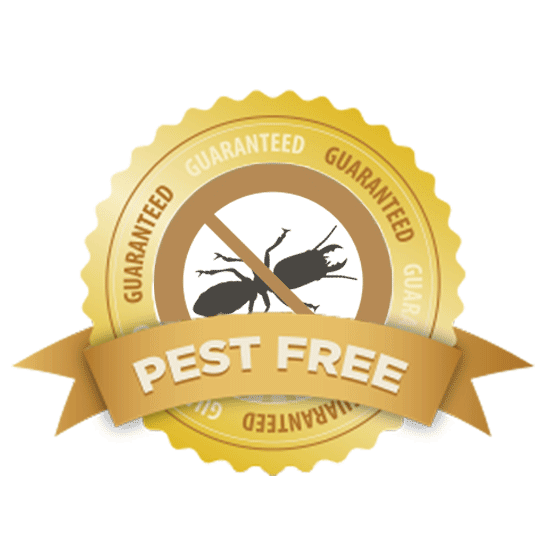A1 Charlotte Pest Control Companies - Your Local Pest Experts
A1 Charlotte Pest Control Companies - Your Local Pest Experts
Blog Article
Bed Bug Treatment Breakdown: Comparing Chemical Vs. Non-Chemical Solutions
In the realm of insect control, particularly when taking care of the persistent problem of bed bugs, the selection in between chemical and non-chemical treatment options can be a critical one. Both methods supply distinctive benefits and disadvantages, influencing variables such as performance, safety considerations, and total price. By taking a look at the nuanced details of each technique, a clearer understanding of which path to go after in dealing with a bed insect invasion can be attained.
Performance of Chemical Treatments
Chemical therapies for bed insect invasions have actually been widely identified for their fast and potent efficacy in eliminating these pests. When taking into consideration the efficiency of chemical treatments, it is important to recognize that they can supply a quick and comprehensive option to a bed bug problem. Professional pest control operators usually count on pesticides to target bed insects at numerous phases of their life cycle, consisting of adults, eggs, and fairies. These chemicals generally function by interfering with the bed bugs' anxious system, causing paralysis and ultimate fatality.
Additionally, chemical therapies have the advantage of supplying recurring results, suggesting that they can proceed to get rid of bed bugs also after the first application. This residual activity is especially valuable in combating any kind of potential re-infestations. Furthermore, the rapid activity of chemical treatments can bring alleviation to individuals encountering serious bed bug infestations, permitting them to gain back control of their living areas quickly.
Safety Concerns With Chemical Solutions
One crucial aspect that requires careful factor to consider when making use of chemical services for bed insect treatment is making sure the security of passengers and the atmosphere. Direct exposure to certain chemicals made use of in bed insect therapies can lead to breathing problems, skin irritation, or other adverse reactions, specifically in people with pre-existing problems or level of sensitivities.
Moreover, the ecological influence of chemical options is one more significant consideration. Some pesticides used in bed pest therapies may be damaging to valuable pests, wild animals, and environments if they leach into the soil or water systems. It is vital to make use of chemical therapies sensibly, following safety guidelines, and considering much less harmful alternatives to minimize these threats and make certain the reliable and risk-free administration of bed insect problems.
Advantages of Non-Chemical Methods
Considering the possible safety issues and ecological effect related to chemical options for bed insect treatment, discovering non-chemical methods offers an appealing alternative with numerous distinct advantages. Non-chemical techniques use a safer choice for households, specifically those with people, animals, or youngsters sensitive to extreme chemicals. These approaches remove the dangers of direct exposure to harmful compounds, reducing the possibility for negative health impacts. In addition, non-chemical treatments are ecologically friendly, as they do not add to air or water pollution, making them a lasting selection for pest control.
In addition, non-chemical options can be effective in targeting bed insects, including hard-to-reach locations where chemical therapies might not penetrate - A1 bed bug exterminator charlotte. Methods such check over here as warmth therapy, vacuuming, heavy steam cleaning, and mattress coverings give complete obliteration without the use of dangerous chemicals.
Limitations of Non-Chemical Treatments

In addition, non-chemical treatments usually call for numerous applications to accomplish successful obliteration. This can be time-consuming and may not constantly assure full elimination of all bed bugs and their eggs, particularly in surprise or hard-to-reach locations.
Additionally, the success of non-chemical treatments heavily depends on appropriate execution and thoroughness, which can be testing for people without professional expertise. Inadequate application of non-chemical methods may lead to incomplete obliteration, leading to persistent infestations and the need for additional treatments.
As a result, while non-chemical therapies have their benefits, it is crucial to recognize these constraints and consider them when establishing one of the most efficient technique for taking care of bed bug invasions.
Cost Contrast: Chemical Vs. Non-Chemical Options
Offered the constraints related to non-chemical therapies, a crucial aspect to assess in the context of bed bug management is the price contrast in between chemical and non-chemical alternatives. Chemical therapies commonly entail the application of insecticides by professionals, which can range from $250 to $900 per space, depending upon the seriousness of the infestation and the dimension of the location to be treated. In contrast, non-chemical treatments like heat therapy or heavy steam can be much more expensive, with prices ranging from $1,000 to $6,000 for a whole home. While the preliminary expense of chemical treatments might seem lower, multiple therapies might be required to totally get rid of the invasion, potentially increasing the total expense. On the other hand, non-chemical alternatives might offer a more sustainable and eco-friendly remedy, although they can be cost-prohibitive for some individuals. Ultimately, when taking into consideration the expense of bed bug therapy alternatives, it is essential to weigh the in advance expenses versus the effectiveness and lasting sustainability of the selected approach.
Conclusion

Considering the possible safety and security issues and environmental influence connected with chemical remedies for bed pest treatment, exploring non-chemical strategies provides a promising choice with a number of distinctive advantages.Provided the restrictions connected with non-chemical treatments, a crucial element to assess in the context of bed pest administration is the price comparison in between chemical and non-chemical choices. In contrast, non-chemical therapies like heat treatment or steam can be extra costly, with prices ranging from $1,000 to $6,000 for a whole home. While the preliminary cost of chemical therapies may appear lower, numerous treatments might be called for to fully get rid of the invasion, possibly enhancing the total expense.In verdict, when comparing chemical and non-chemical bed bug therapy options, it is important to consider efficiency, safety and security, bed bug pest control benefits, constraints, and cost.
Report this page